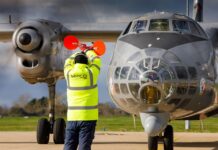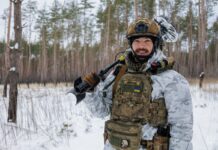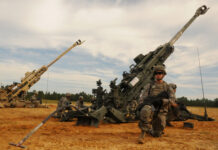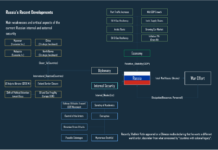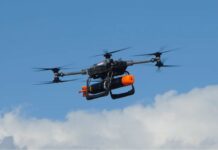The war in Ukraine has thrust the issue of autonomy and artificial intelligence (AI) literally to the frontline, with both belligerents aiming for, and actually utilising various degrees of AI and autonomous operations. At the time this chapter was written (spring 2023) the Russian military has displayed a limited range of ground weapons and systems considered ‘autonomous’. Likewise, Russia’s supposed application of AI for the military has been either very limited, or not utilised on the scale of their Ukrainian opponents, owning to a number of economic, industrial and military factors.
In this war, the autonomy in ground vehicles is so far limited to mostly remote-controlled systems, owing first and foremost to the Russian military’s approach and capacity to develop such technology, along with a very complicated Ukrainian battlespace teeming with countermeasures. By May 2023, there was yet to be an example of an actual ground autonomous system used in direct combat, although some open-source data suggests that certain types of uncrewed ground vehicles (UGVs) may already be utilised. This chapter will review Russian concepts and approaches to utilising UGVs as a military asset, with an eye towards deployment in Ukraine. Given the ongoing hostilities, it is likely that some information contained therein may be outdated by the time this chapter is in print, in which case this manuscript should be treated as part of a body of analytical literature examining the state and nature of Russian military autonomy and AI research, development, testing and evaluation.
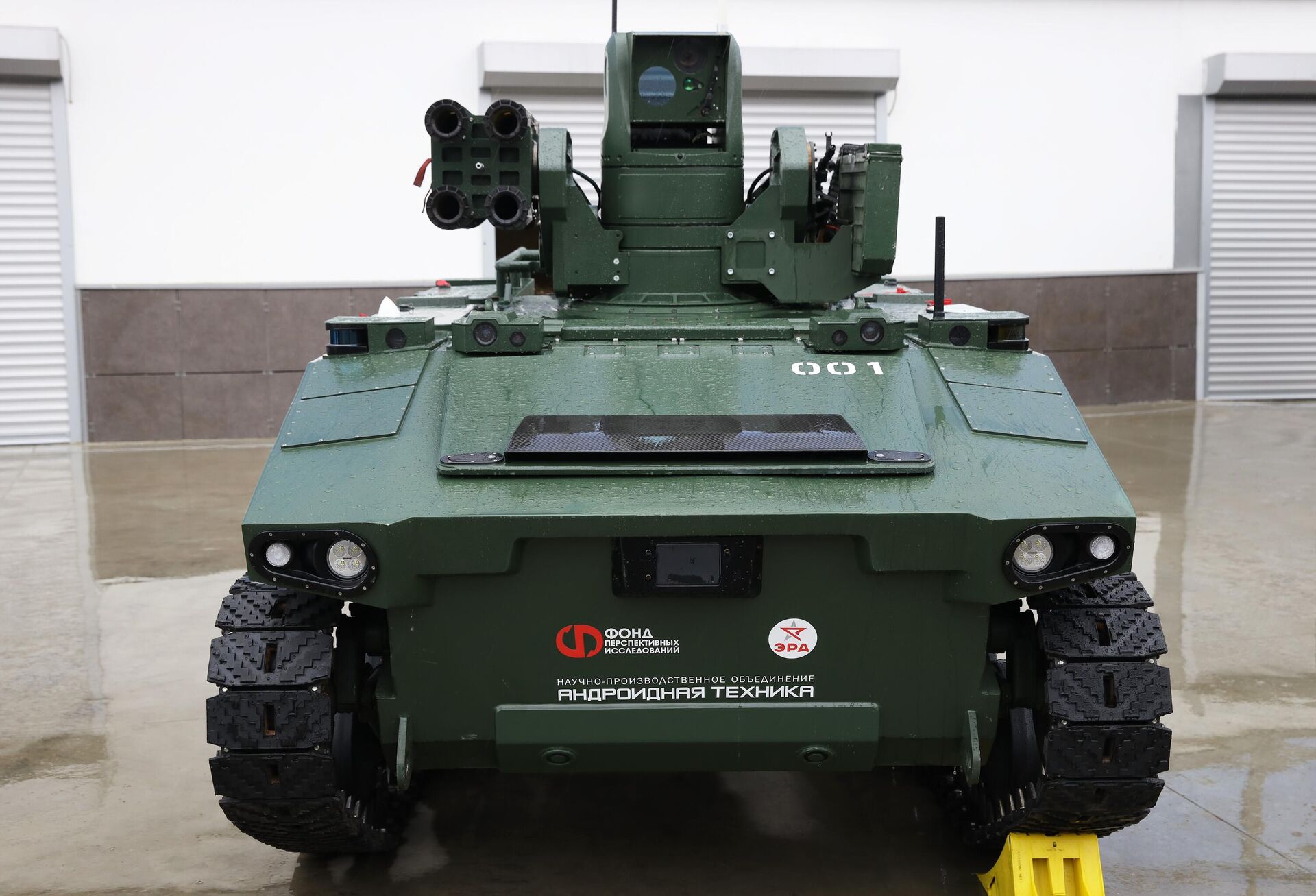
Credit: RIA Novosti
Russian Military AI and Autonomy for Ground Systems
This chapter will concentrate on the most recent developments that impact how the Russian military conceptualises UGV applications in combat. This effort is facilitated and aided by a number of Russian government departments, offices and initiatives, launched over decades to guide the military’s thoughts and developments in autonomy and robotics. One of the most impactful developments so far is the Ministry of Defence’s (MOD’s) launch of the Main Department for Artificial Intelligence in August 2022.[1] Its responsibilities point to its role as the main AI node in the military’s research and development ecosystem, with authority on AI use and implementation across the force, roughly equivalent to the US Department of Defense’s JAIC (Joint Artificial Intelligence Center). While multiple autonomy and AI efforts are already taking place across the MOD institutions, this AI Department is likely to manage technologies, efforts and lessons learned by the Russian military to date, along with the funding to invest in ready systems, products and weapons.
In fact, the Russian state media confirmed that this Department is using the experience gained in Ukraine to increase the effectiveness of its weapons, albeit without going into additional details on how that’s accomplished.[2] The Department’s newly appointed director, Vasily Yelistratov, confirmed that AI technologies are used in Russian high-precision weapons[3] as a cross-cutting technology in ground-, air-, and sea-based systems.[4] In what has become an official byline in the MOD’s high-tech research community, Yelistratov notes that wars of the future will be wars of machines, emphasising the human-out-of-the-loop goal to eventually minimise human losses.[5] With such sentiment common across the Russian military[6], the MOD so far does not spell out publicly how it intends to graduate from a human-intensive combat of today to the environment where humans have a lessening, and eventually, a disappearing, role in combat.

Credit: Russian Foundation for Advanced Research Projects in the Defence Industry
Another recent official development that sheds light on the MOD’s envisioned autonomy is the “Concept of the Russian Armed Forces activity in the development and use of weapons and systems using artificial intelligence technologies” (AI Concept), first unveiled in July 2022, and then in March 2023 at the United Nations.[7] This public document effectively enshrines a human-in-the-loop as the current guiding authority, such as the need to maintain human control over a military machine to uphold compliance with the existing norms of international law.[8] This document maintains that such control should be exercised by means of limitations on types of targets, duration of operation, geographic scope and scale of use; admitting persons who have successfully mastered the procedures of responsible use of AI-enabled weapons to management and control roles; and ensures human control over the production process of separate military elements and products. The document notes that responsibility for using weapons systems with AI technologies lies with the official who assigns a task to such weapons and gives the order to use them.[9] The Concept also directs that a human should remain responsible for decisions to develop and use AI-enabled weapons throughout their life cycle, as well as in accordance with applicable norms of international law, including by ensuring operation of such systems within a responsible command and control (C2) chain.[10]
These two official developments point to an evolving concept that builds on the MOD’s “Creation of Prospective Military Robotics through 2025” classified target programme launched in 2014 as the main roadmap for the development of aerial, ground and maritime robotics.[11] To augment this process, the MOD has also developed a concept for the military robotics use through 2030.[12] A major consideration and backdrop for the above-mentioned initiatives are Russia’s significant human, material and technical expenditures in its Ukraine invasion that place an emphasis on developing and using weapons and systems operated by humans, in a direct or remote-controlled fashion. Yet the MOD’s deliberations on AI and autonomy often include debates on the degree of such technology’s evolution as either an eventual, unavoidable or a limited human substitute.

Credit: Russian MoD
One such recent discussion in an MOD-run Voennaya Mysl’ (Military Thought) publication, which aims its content at the active and retired military/security professionals, points out that AI as a computer phenomenon does not have the intellectual abilities of a person.[13] The article specifically points out that the main difference between intellectualisation (human-like AI performance) and automation (limited set of pre-assigned tasks) is the computer’s ability to make decisions in conditions of significant uncertainty, based on heterogeneous and incomplete information, frequently changing situations, including those outside the programmed algorithms.
This particular discussion notes that if AI has the ability to make decisions in a variety of, and in rapidly changing situations in a similar manner to a human,[14] then the key point should be the system’s independence to analyse data, make decisions and implement them without agreeing with a human, whether it be an operator, owner or a programmer.[15] A military system endowed with such AI should theoretically be more independent than just a simple automated technical device, with the ability to draw conclusions and make decisions depending on the ongoing information analysis.[16]
More specific to the UGV concept, some Russian military academics think that increasing the degree of intellectualisation as a result of autonomy in the vehicle’s C2 should be carried out gradually.[17] Such a campaign will progressively reduce the role of the operator in managing the UGV to authorising various actions, such as the procedure for using weapons or a route to a designated point. This would eventually exclude a person from direct participation by reducing operator role to task setting and controlling a robotics group on a given mission.[18] Considering the psychological, mental and other limitations of human decision-makers’ abilities, as well as the currently modest role of automation in decision-making, Russian MOD researchers think[19] there is a growing need to use ‘intelligent’ systems for planning and managing daily and combat activities to transform unstructured data into knowledge ready for immediate use. In their deliberations, goal-setting is currently[20] only the prerogative of humans, but since AI systems could be more and more scalable, the volume of ‘human’ functions transferred to them could also increase.
This and similar Russian military debates point to AI’s potential for self-learning and adaptation, changing its algorithms to achieve a desired result via external conditions or stimuli.[21] The potential concern is that such a military system could independently change and improve the software originally embedded in it via self-programming, therefore solving problems that were not foreseen during the initial creation of this particular system.[22] It is likely that the MOD’s AI Concept was finally unveiled to address such concerns, by assigning human responsibility to as yet an unknown set of AI military developments.
Russian military academics and experts are also trying to understand how AI can simulate human commanders’ decision-making in combat. According to some in the MOD, neural network training[23] is carried out on a sample limited by the knowledge of experts, as well as by the amount of information in official documents and manuals, leading to the conclusion that AI would not be able to copy actual human thinking. This current level of training can lead to the AI adopting solutions that do not go beyond the boundaries of the training sample itself. At the same time, ingenious, resourceful, creative and high-risk solutions usually associated with human thinking in critical and stressful situations would be ignored or simply go unlearned.[24]
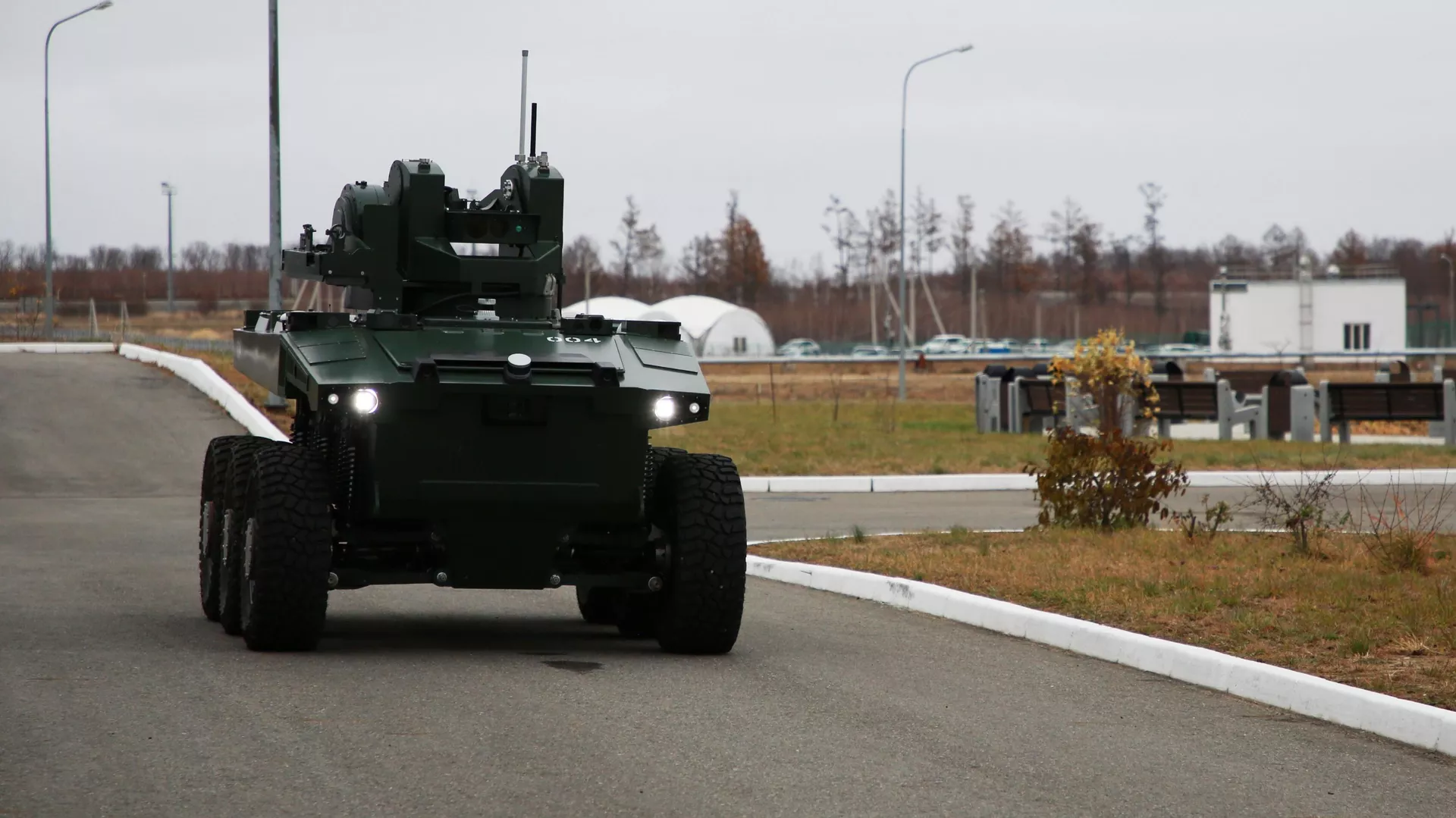
Credit: RIA Novosti
This means that there could be situations[25] on the battlefield in which the AI, unlike the human commander, would not be able to make an actual ‘intelligent’ decision. To the MOD, the human, as a ‘biological prototype’ of an artificial neural network, arrives[26] at knowledge throughout their life under the continuous influence of internal and external factors. It is this large volume of specified conditions and actions – that is, an entire lifetime of experience – that “does not fit into any computer program in principle”.[27] In ‘practical UGV terms,’ this implies:
- recognising different levels of incoming threats;
- quickly identifying the battlefield environment and terrain for subsequent action;
- determining and understanding the nature and extent of physical obstacles;
- coordinating with different ground and air-based assets for battlefield management;
- considering different levels of uncertain and unpredictable factors as a result of planned or accidental conditions on the battlefield;
Added to these will be many other criteria associated with modern combat like the one taking place in Ukraine.[28] Some of these issues can be mitigated by constant training and updated data sets via an increasingly sophisticated AI learning modules, but the full extent of a UGV mimicking intuitive human behaviour is probably uncertain and unlikely.[29]
Therefore, if human experience is a factor that any advanced intellectual systems cannot replicate, then AI would remain limited in its capability, even if it could offer quick and precise calculations and conclusions. This concept of an AI as a decision-making tool that aids humans is a key principle articulated across the Russian MOD today, despite engaging in discussions on the more futuristic capacity across the nation’s military forces. Going forward, the MOD’s priorities include[30] introducing AI elements into drone control systems, swarm development, man-unmanned teaming (MUM-T), and integrating these systems in a common operating environment with manned aircraft. AI tests to enable multiple ground robotic systems are supposedly taking place[31] across the Russian military industry and services.[32] It is not clear to what extent the Ukraine war has affected such priorities, but for now there is no indication that the MOD is deviating from such long-term plans.
Russian Military UGVs in Practice
As of 2023, Russian military developers have created multiple combat and support UGV systems, including Platforma-M, Nerehta, Soratnik, Kungas, Vihr, Shturm, Marker, Uran-6, Uran-9, Prokhod, Scarab, and Scorpion, to name a few. By May 2023, some of these were already used in Ukraine as remote-controlled systems, with the operator in firm control and relative proximity to the UGV itself. In July 2022, the Russian military tested the ‘Prohod-1’ demining UGV in Ukraine’s Donbas region to clear mines and unexploded ordnance (UXO).[33] The Russian MOD also noted that Prohod-1 was tested in Syria alongside Uran-6.[34] Russian military sappers used the ‘Kobra-1600’ UGV in Ukraine for ISR and detecting unexploded mines, missile fragments and improvised explosive devices. The Russian military is also using Uran-6 demining vehicles to clear large areas of UXO across Donbass and southern Ukraine.[35]

Credit: TV Zvezda
In April 2022, Russia pledged to begin live-fire tests of the Shturm heavy strike robot designed primarily for urban combat, which is being created on the basis of the T-72.[36] It’s not clear if the tests that involved firing at targets from a 125 mm gun were actually carried out, given a lack of subsequent media coverage. The same can be said about most of the UGV projects named above – after initial testing of Kungas, Vihr, Nerehta and Soratnik UGVs, they were either designated as test platforms for subsequent designs, or the Russian media went quiet on their continued development. For now, the biggest questions arising from Russia’s pre-Ukraine invasion development of combat UGVs is their absence from frontline combat in the current war.
This absence is most likely defined by the 2018 Uran-9 UGV stress tests that took place in Syria. After a comprehensive analysis of Uran-9 failures, the Russian MOD indicated that for the next 10-15 years, one-time and preferably stationary UGV use is likely the most viable approach to employing them. Examples include ‘one-off’ or ’kamikaze’ attacks against adversary hard points and immobile targets.[37] The current UGV generation’s ultimate combat mission is to be expendable as a complement to other systems, forces and units.[38] The logistical and human-intensive difficulty of trying to retrieve damaged or destroyed UGVs should outweigh their production and development costs. Therefore, post-Uran-9 MOD directives proposed that such combat vehicles should be used with other military formations and never on their own, since their breakdown would negatively impact the speed and effectiveness of a military mission.[39] In 2019-2020, the Russian military took delivery of a limited number of Uran-9 UGVs, presumably for testing and evaluation, but this was likely delayed due to the human and material resource allocation for the Ukraine war.[40]

Credit: RIA Novosti
The Russian MOD’s wish list for combat UGVs includes autonomy for faster decision-making, especially in the rapidly-changing urban combat environment.[41] Some Russia-based military experts think that fully autonomous combat systems capable of seeking targets on their own could appear in several decades, based on the current evolution of AI technologies.[42] The key characteristics for uncrewed and autonomous ground combat should include maximum unification, modularity, multifunctionality, compatibility with different systems, and the ability to integrate into existing and future military formations.[43] Such platforms should enable information exchange between UGVs when part of a mixed group or a swarm of different ground and aerial vehicles, including with crewed systems, and be resistant to countermeasures.[44]
Practical Combat UGV Application
In February 2023, Russia’s Dmitry Rogozin, a former director of Roscosmos who now operates in the Ukraine’s Donbas region, announced that he had taken delivery of several ‘Marker’ UGVs.[45] He promised to start uploading target images and combat algorithms to the vehicle’s C2 modules, and to install anti-tank weapons to possibly confront Western-provided M1 Abrams and Leopard 2 tanks.[46] This marked the first appearance of a combat UGV in Ukraine, although questions remain why Rogozin – who is now a private citizen – and not the actual MOD was tasked with this testing and evaluation.

Credit: RIA Novosti
Russia’s Marker UGV was developed jointly by the Advanced Research Foundation (ARF, Russia’s DARPA-like organisation) and Android Technologies, one of Russia’s major robotics developers. Marker is a testbed for autonomous, robotic and AI technologies such as computer vision, communications, navigation, autonomous movement, and group control.[47] By early 2023, there were several tracked and wheeled versions, including a reconnaissance UGV[48] with a tethered unmanned aerial vehicle (UAV) drone for better intelligence, surveillance, and reconnaissance (ISR). Additionally, there is a combat version[49] which can be armed with anti-tank guided missiles (ATGMs), automatic grenade launchers (AGLs), machine guns and/or pods capable of carrying UAVs or loitering munitions. The Marker guard version is equipped with day and infrared cameras. The Marker was tested[50] as a counter-UAV platform prior to the February 2022 invasion, as a defence against small drones that have become so prevalent in Ukraine war. There is also a Marker logistics version[51] for cargo transport and medical evacuation. Rogozin’s plans include testing the combat version with anti-tank missiles, and to test Marker’s tethered drone as a reconnaissance platform, with the UGV hidden from potential Ukrainian countermeasures.
One of Marker’s key roles is the coordinated autonomous action in an uncertain environment to perform tasks independently[52] at a great distance from the operator, via deep neural networks to assist the vehicle’s decision-making. The ARF also envisions Marker learning human voice commands, after it tested voice control technology for MUM-T. Marker’s technical solutions such as AI, machine vision, and group control can be potentially scaled to the level of a large tank or other uncrewed ground vehicles, hinting at the possible future plans if this UGV passes the envisioned tests in Ukraine.[53]

Credit: RIA Novosti
In 2021, Marker’s developers conducted an experiment with several UGVs that travelled across[54] forested terrain on their own to a pre-selected destination. Rogozin’s test plans include Marker supposedly distinguishing adversary vehicles in battle via datasets. [55] It’s not clear whether such datasets will come from the ARF and/or Android Technologies, or Rogozin’s organisation can acquire them elsewhere. There are Russian companies working on similar image recognition mechanisms for military UAVs’ AI-enabled C2.[56] This claim concerns neural network learning algorithms to identify NATO military equipment in a wide variety of environmental conditions, including short exposure times.[57] This data could potentially aid in Marker tests, assuming Rogozin can acquire such datasets.
It’s unclear whether Rogozin’s experiment will involve:
- a fully remote-controlled Marker version to mitigate against Ukraine’s battlefield complexity and uncertainty;
- a human-in-the-loop approach, with Marker travelling autonomously and an operator making the final target selection and termination decision, or;
- a human-on-the-loop approach, with Marker selecting and deciding which targets to strike on its own, with the operator making the final approval.
It’s likely that the Marker ISR version can be best applicable to Ukraine. This will involve the UGV launching a tethered drone that runs on a power cable to a height of 150 m while its positioned behind cover to avoid detection, allowing the vehicle to ‘see’ up to 15- 20 km as part of a solution to provide key battlefield observation and situational awareness.[58] If both claimed tests are unsuccessful, the UGV can be used as dug-in stationary gun platform, a plausible tactic indicated by the Russian MOD’s review of Uran-9 performance in Syria.

Credit: Rusandroid, via Wikimedia Commons
Riding forward with UGVs?
Following the Russian military’s disastrous performance in Ukraine, some Russian military commentators put forth ideas for potentially improving tank and ground warfare operations. In June 2022, Victor Murakhovsky, editor-in-chief of the highly-respected Russian Arsenal Otechestva (Arsenal of the Fatherland) magazine, proposed that the main area for improving tank performance is in situational awareness and C2.[59] Murakhovsky proposed equipping a tank with micro-drones that will operate within line-of-sight, up to 4-5 km, at range where adversary ground forces tend to concentrate, to more accurately guide tank shells to target and avoid detection.[60] Likely influenced by significant losses among Russian tank crews in the opening months of the invasion, Murakhovsky noted the gradual automation and robotisation of combat processes inside the tank and reduction of the crew as another prospective development for tank warfare.[61] Murakhovsky deliberated that in the near future, mixed formations made up of crewed tanks and uncrewed vehicles could take to the battlefield.[62] In this scenario, remotely controlled robotic tanks could be the front offensive echelon to conduct reconnaissance, provide security, and perform other tasks in place of today’s manned tanks.

Credit: Russian MoD
While in Syria the Uran-9 failed in the roles Murakhovsky prescribed to the future combat machine, the Marker can once again try to prove whether such roles are in fact technically feasible in the first place, given the complexity of the Ukrainian battlefield, and presence of numerous countermeasures that include plentiful commercial drones for target spotting and reconnaissance. Other Russian MOD UGV proposals point to a semi-automatic control system that works in MUM-T mode. In this envisioned scenario, a combat UGV moves between infantry soldiers, and its course can be corrected by the nearest fighter using voice commands.[63] Combat UGVs could also move ahead of the infantry, focusing on the movements of neighbouring soldiers.[64]
The Russian military experts are deliberating other UGV concepts and tactics, such as envisioning teams of light and heavy UGVs working with UAVs in storming an urban target. Such teamwork involves ISR and strike units to uncover the adversary’s weapons and defences, followed by the aerial reconnaissance and combat UAV group made up of quadcopters and light drones that carry out strikes on the enemy using guided munitions.[65] In the meantime, a long-range aerial reconnaissance UAV group carries out constant surveillance.[66] Then, heavy combat UGVs are envisioned to take up firing positions under cover of artillery fire and attack their targets. The engineering UGVs then make passages through the remaining enemy defences.[67] Medium and light UGVs cover the attacking units with suppressing fire, hitting enemy firing positions in buildings or defensive structures. Should the adversary prove resilient, remote-controlled platforms with explosive charges are sent to the target and detonate.[68] After that, the target area is fully captured by motorised rifle and assault units.[69]
This UGV-UAV team concepts can be potentially applied outside of urban combat settings, in countering a peer adversary’s forces and attritting their capabilities with the increasing use of uncrewed ground assets acting in concert with other weapons systems. Some of the UGVs envisioned in this scenario are remote-controlled, others are semi-autonomous, and some can be fully autonomous within the narrow confines of their mission sets. Prior to the Ukraine invasion, the Russian defence industry showed signs that it was in fact leaning towards applying heavy UGVs in urban setting. Of special interest for Ukraine-like combat environment are the Shturm UGV based on a T-72 tank platform, and the Vikhr/Udar UGV based on the BMP-3 infantry fighting vehicle (IFV) platform.[70] At the same time, there is no additional news of these platforms going through their paces and combat stress tests.

Credit: Sputnik
A key issue with much of the Russian UGV development and testing is a lack of standardisation – this is a problem identified years ago at one of the first annual “Robotisation of the Russian Armed Forces” conferences. Multiple UGV projects were developed and tested separately from others, while no clear data exists whether such tests in fact mimicked an actual complex battlefield environment.[71] Likewise, international sanctions against the Russian defence industry and Russia’s high-tech companies may impact the scaling-up of the necessary AI and autonomy technologies beyond a few existing UGV examples. The developers of Marker are claiming the UGV will enter mass production at the conclusion of trials in Ukraine – a potentially significant accomplishment in light of Russia’s massive losses of military ground vehicles in Ukraine, and the MOD’s need to replenish its stocks with more modern and modernised equipment.[72] At the same time, there is no sign of the earlier claimed acquisition of Uran-9 UGVs by the military, perhaps also a sign of the military industry’s stress during the war.
With very few Russian UGVs tested in actual combat, it’s difficult to judge the full extent and scope of the MOD’s claims of AI and autonomy testing in such systems. Remotely-operated UGVs appear to be more practical at this point in the war, used after certain territory was secured to clear it from mines and UXO. Yet such use places operators in unavoidable relative proximity to the vehicle, possibly putting them in danger should the UGV location be tracked and attacked by Ukrainian forces. The Marker UGV project remained Russia’s most public example of AI and autonomy for years, and it remains so today with the claimed tests by Dmitry Rogozin’s team. Such tests in Ukraine may open the possibility for subsequent trials of other vehicles. Using a UGV in combat instead of human soldiers is exactly why such technology exists. Whether the Russian military and industry can meet the challenge of proving such technology is ready for war remains to be seen.

Credit: TASS
Samuel Bendett is an analyst with CNA’s Russia Studies Program and an adjunct senior fellow with the Center for New American Security’s Technology and National Security Program. Previously he worked at the National Defense University. The views expressed here are his own.
[1] The Russian Ministry of Defense created a department for working with artificial intelligence (В Минобороны РФ создали управление по работе с искусственным интеллектом), Tass.ru, 17 August 2022. https://tass.ru/armiya-i-opk/15492531
[2] The MOD announced it is using the special military operation experience in improving weapons (В Минобороны сообщили об использовании опыта СВО для улучшения системы вооружения), Tass.ru, 21 August 2022. https://tass.ru/armiya-i-opk/15527585
[3] Russian defense ministry introducing AI technologies in army, Tass.com, 24 August 2022. https://tass.com/defense/1497995
[4] Russian defense ministry introducing AI technologies in army, Tass.com, 24 August 2022. https://tass.com/defense/1497995
[5] Russian defense ministry introducing AI technologies in army, Tass.com, 24 August 2022. https://tass.com/defense/1497995
[6] Expert believes that artificial intelligence is becoming the main task in the development of UAVs (Эксперт считает, что искусственный интеллект становится главной задачей в развитии БЛА). Tass.ru. 22 August 2021. https://tass.ru/armiya-i-opk/12189355; Expert said that the robotisation of war has become the main global trend (Эксперт заявил, что роботизация средств ведения войны стала основным мировым трендом). Tass.ru. 23 August 2021. https://tass.ru/armiya-i-opk/12189407; Biryulin, Roman. “Interview with Alexey Krivoruchko, Deputy Minister of Defense of the Russian Federation”) Интервью заместителя Министра обороны Российской Федерации Алексея Криворучко). Redstar.ru. 30 December 2020. http://redstar.ru/oruzhie-rossii-operezhaet-vremya/
[7] Speech by Deputy Head of the Russian Delegation K.V. Vorontsov during the thematic discussion on the section “Conventional Arms” in the First Committee of the 77th session of the UN General Assembly (Выступление заместителя руководителя российской делегации К.В.Воронцова в ходе тематической дискуссии по разделу «Обычные вооружения» в Первом комитете 77-й сессии ГА ООН), RussiaUN.ru, 20 October 2022. https://russiaun.ru/ru/news/201022_v
[8] Concept of Activities of the Armed Forces of the Russian Federation in the Development and Use of Weapons Systems with Artificial Intelligence Technologies, 2023.
[9] Concept of Activities of the Armed Forces of the Russian Federation in the Development and Use of Weapons Systems with Artificial Intelligence Technologies, 2023.
[10] Concept of Activities of the Armed Forces of the Russian Federation in the Development and Use of Weapons Systems with Artificial Intelligence Technologies, 2023.
[11] The Ministry of Defense approved the program for the cdevelopment of military robots (Минобороны утвердило программу по созданию военных роботов), Voennoe.rf, 4 December 2014. https://xn--b1aga5aadd.xn--p1ai/2014/%D0%9E%D0%B1%D0%BE%D1%80%D0%BE%D0%BD%D0%BA%D0%B038/
[12] The official Russian MOD website, March 26, 2015. http://mil.ru/et/news/more.htm?id=12011844@egNews
[13] ON LEGAL REGULATION OF ARTIFICIAL INTELLIGENCE APPLICATION IN THE MILITARY SPHERE
(О ПРАВОВОМ РЕГУЛИРОВАНИИ ПРИМЕНЕНИЯ ИСКУССТВЕННОГО ИНТЕЛЛЕКТА В ВОЕННОЙ СФЕРЕ), E. A. GLUKHOV, Voennaya mysl, no. 8 (2022): 73-85.
[14] ON LEGAL REGULATION OF ARTIFICIAL INTELLIGENCE APPLICATION IN THE MILITARY SPHERE
(О ПРАВОВОМ РЕГУЛИРОВАНИИ ПРИМЕНЕНИЯ ИСКУССТВЕННОГО ИНТЕЛЛЕКТА В ВОЕННОЙ СФЕРЕ), E. A. GLUKHOV, Voennaya mysl, no. 8 (2022): 73-85.
[15] ON LEGAL REGULATION OF ARTIFICIAL INTELLIGENCE APPLICATION IN THE MILITARY SPHERE
(О ПРАВОВОМ РЕГУЛИРОВАНИИ ПРИМЕНЕНИЯ ИСКУССТВЕННОГО ИНТЕЛЛЕКТА В ВОЕННОЙ СФЕРЕ), E. A. GLUKHOV, Voennaya mysl, no. 8 (2022): 73-85.
[16] ON LEGAL REGULATION OF ARTIFICIAL INTELLIGENCE APPLICATION IN THE MILITARY SPHERE
(О ПРАВОВОМ РЕГУЛИРОВАНИИ ПРИМЕНЕНИЯ ИСКУССТВЕННОГО ИНТЕЛЛЕКТА В ВОЕННОЙ СФЕРЕ), E. A. GLUKHOV, Voennaya mysl, no. 8 (2022): 73-85.
[17] O.I. PETRASHKO, MAIN TRENDS IN THE DEVELOPMENT OF GROUND COMBAT ROBOTIC SYSTEMS, ВЕСТНИК АКАДЕМИИ ВОЕННЫХ НАУК № 4 (73) 2020.
[18] O.I. PETRASHKO, MAIN TRENDS IN THE DEVELOPMENT OF GROUND COMBAT ROBOTIC SYSTEMS, ВЕСТНИК АКАДЕМИИ ВОЕННЫХ НАУК № 4 (73) 2020.
[19] Burenok V, Durnev R., and Kryukov K., ‘Smart weapons: the future of AI in the military’, Weapons and Economy, 1/43 2018, pp 4-13. http://www.viek.ru/43/4-13.pdf
[20] Burenok V, Durnev R., and Kryukov K., ‘Smart weapons: the future of AI in the military’, Weapons and Economy, 1/43 2018, pp 4-13 http://www.viek.ru/43/4-13.pdf
[21] ON LEGAL REGULATION OF ARTIFICIAL INTELLIGENCE APPLICATION IN THE MILITARY SPHERE
(О ПРАВОВОМ РЕГУЛИРОВАНИИ ПРИМЕНЕНИЯ ИСКУССТВЕННОГО ИНТЕЛЛЕКТА В ВОЕННОЙ СФЕРЕ), E. A. GLUKHOV, Voennaya mysl, no. 8 (2022): 73-85.
[22] ON LEGAL REGULATION OF ARTIFICIAL INTELLIGENCE APPLICATION IN THE MILITARY SPHERE
(О ПРАВОВОМ РЕГУЛИРОВАНИИ ПРИМЕНЕНИЯ ИСКУССТВЕННОГО ИНТЕЛЛЕКТА В ВОЕННОЙ СФЕРЕ), E. A. GLUKHOV, Voennaya mysl, no. 8 (2022): 73-85.
[23] Burenok V, Durnev R., and Kryukov K., ‘Smart weapons: the future of AI in the military’, Weapons and Economy, 1/43 2018, pp 4-13 http://www.viek.ru/43/4-13.pdf
[24]Burenok V, Durnev R., and Kryukov K., ‘Smart weapons: the future of AI in the military’, Weapons and Economy, 1/43 2018, pp 4-13 http://www.viek.ru/43/4-13.pdf
[25] Burenok V, Durnev R., and Kryukov K., ‘Smart weapons: the future of AI in the military’, Weapons and Economy, 1/43 2018, pp 4-13 http://www.viek.ru/43/4-13.pdf
[26] Burenok V, Durnev R., and Kryukov K., ‘Smart weapons: the future of AI in the military’, Weapons and Economy, 1/43 2018, pp 4-13 http://www.viek.ru/43/4-13.pdf
[27] Burenok V, Durnev R., and Kryukov K., ‘Smart weapons: the future of AI in the military’, Weapons and Economy, 1/43 2018, pp 4-13 http://www.viek.ru/43/4-13.pdf
[28] Victor Murakhovsky, ‘Unmanned Ground vehicles’, (Наземные военные роботы), Arsenal Otechestva, #3 (41) 2019.
[29] Victor Murakhovsky, ‘Unmanned Ground vehicles’, (Наземные военные роботы), Arsenal Otechestva, #3 (41) 2019.
[30] Long-range UAVs of enhanced endurance to be provided for Russian army by end of 2021, Tass.com, 30 December 2020. https://tass.com/defense/1241331
[31] Samuel Bendett, “BUREAUCRAT’S GAMBIT: WHY IS DMITRY ROGOZIN SENDING RUSSIAN UNCREWED GROUND VEHICLES TO UKRAINE—AND DOES IT MATTER?”, Modern War Institute, 10 February 2023. https://mwi.usma.edu/bureaucrats-gambit-why-is-dmitry-rogozin-sending-russian-uncrewed-ground-vehicles-to-ukraine-and-does-it-matter/
[32] Artificial Intelligence: Risks and Potential, RedStar.ru, March 2018. http://redstar.ru/iskusstvennyj-intellekt-eto-i-riski-i-vozmozhnosti/
[33] The newest Prohod-1 robot-sapper was used for the first time in Ukraine (Новейший робот-сапер “Проход-1” впервые задействовали в спецоперации на Украине), Tass.ru, 20 July 2022. https://tass.ru/armiya-i-opk/15259901 ; Vikot Sokirko, “The appearance of sapper robots in Ukraine is a good sign for the Russian Armed Forces” (Появление роботов-саперов на Украине – хороший знак для ВС РФ) Gazeta.ru, 19 July 2022. https://www.gazeta.ru/army/2022/07/19/15152348.shtml
[34] The newest Prohod-1 robot-sapper was used for the first time in Ukraine (Новейший робот-сапер “Проход-1” впервые задействовали в спецоперации на Украине), Tass.ru, 20 July 2022. https://tass.ru/armiya-i-opk/15259901 ; Vikot Sokirko, “The appearance of sapper robots in Ukraine is a good sign for the Russian Armed Forces” (Появление роботов-саперов на Украине – хороший знак для ВС РФ) Gazeta.ru, 19 July 2022. https://www.gazeta.ru/army/2022/07/19/15152348.shtml
[35] Konstantin Isaev, Alisa Crauze, “Joint work for humans and robots: how Russian sappers are demining Donbas” (Совместный труд человека и робота: как саперы РФ разминируют земли Донбасса), TVZvezda.ru, 22 June 2022. https://tvzvezda.ru/news/2022622315-C5Ik3.html; “In 2022, Rosgvardia will form technical requirements for the Marker UGV” (Источник: Росгвардия в 2022 году сформулирует техзадание для “Маркера”), Risa. Ru, 20 June 2022. https://ria.ru/20220620/marker-1796640925.html; Ilya Vedmedenko, “New Marker robot was tested as a counter-drone system” (Новый робот «Маркер» испытали как средство борьбы с БПЛА), Naked-Science.ru, 12 February 2022. https://naked-science.ru/article/tech/novogo-robota-marker-ispytali; “Artificial Intelligence in Russia” newsletter, Issue 11, 25 September 2022. https://www.cna.org/our-media/newsletters/ai-and-autonomy-in-russia
[36] Источник рассказал, когда Россия начнет испытания ударного робота “Штурм”, Ria.ru, 14 March 2022.
https://ria.ru/20220314/shturm-1777979308.html
[37] “Problematic issues of the development of military robotic systems (Проблемные вопросы развития робототехнических комплексов военного назначения),” BMPD (blog), 16 June 2018. https://bmpd.livejournal.com/3239351.html.
[38] Aleksei Zakvasin, Elizaveta Komarova “In the line of fire”: what tasks are assigned to combat robots of the Russian army («На линии огня»: какие задачи возложены на боевых роботов российской армии), Rusisan.RT.com, 28 November 2019. https://russian.rt.com/russia/article/691199-kungas-boevye-roboty-minoborony
[39] “Problematic issues of the development of military robotic systems (Проблемные вопросы развития робототехнических комплексов военного назначения),” BMPD (blog), 16 June 2018. https://bmpd.livejournal.com/3239351.html.
[40] Российские военные приняли на вооружение боевой робот “Уран-9”, Voennoe.rf, 24 January 24, 2019. https://xn--b1aga5aadd.xn--p1ai/2019/%D0%9A%D0%B0%D0%BB%D0%B0%D1%88%D0%BD%D0%B8%D0%BA%D0%BE%D0%B22/
[41] Российские боевые роботы в будущем смогут сами распознавать и поражать цели, Tass.ru, 5 February 2019, https://tass.ru/armiya-i-opk/6081210; https://ria.ru/20191124/1561522690.html
[42] Ученый назвал сроки появления автономных боевых роботов, IZ.ru, 25 August 2020. https://iz.ru/1052736/2020-08-25/uchenyi-nazvali-sroki-poiavleniia-avtonomnykh-boevykh-robotov
[43] P.A. Dulnev, ПРИМЕНЕНИЕ РОБОТОТЕХНИЧЕСКИХ КОМПЛЕКСОВ ПРИ ШТУРМЕ ГОРОДА (УКРЕПЛЕННОГО РАЙОНА) EMPLOYMENT OF ROBOTICCOMPLEXES DURING ASSAULT OF A CITY, Vestnik Akademii Voennyh Nauk, № 3 (60) 2017, pp 26-32.
[44] P.A. Dulnev, ПРИМЕНЕНИЕ РОБОТОТЕХНИЧЕСКИХ КОМПЛЕКСОВ ПРИ ШТУРМЕ ГОРОДА (УКРЕПЛЕННОГО РАЙОНА) EMPLOYMENT OF ROBOTICCOMPLEXES DURING ASSAULT OF A CITY, Vestnik Akademii Voennyh Nauk, № 3 (60) 2017, pp 26-32.
[45] Dmitry Rogozin Telegram channel, 2 February 2023. t.me\rogozin_do\3690
[46] Dmitry Rogozin Telegram channel, 2 February 2023. t.me\rogozin_do\3690
[47] Oleg Martyanov: In the future, there will be armies of smart markers, not terminator armies (Олег Мартьянов: в будущем будет не армия терминаторов, а армия умных “Маркеров”), Tass.ru, 29 June 2020. https://tass.ru/interviews/8831445
[48] Two Majors (Dva Majora) Telegram channel, 2 February 2023. https://t.me/dva_majors/8631
[49] Oleg Martyanov: In the future, there will be armies of smart markers, not terminator armies (Олег Мартьянов: в будущем будет не армия терминаторов, а армия умных “Маркеров”), Tass.ru, 29 June 2020. https://tass.ru/interviews/8831445
[50] Work on the Marker robot has completed in Russia (В России завершили работы по проекту робота “Маркер”), Ria.ru, 11 January 2022. https://ria.ru/20220111/marker-1767278502.html
[51] Two Majors (Dva Majora) Telegram channel, 2 February 2023. https://t.me/dva_majors/8631
[52] Oleg Martyanov: In the future, there will be armies of smart markers, not terminator armies (Олег Мартьянов: в будущем будет не армия терминаторов, а армия умных “Маркеров”), Tass.ru, 29 June 2020. https://tass.ru/interviews/8831445
[53] Oleg Martyanov: In the future, there will be armies of smart markers, not terminator armies (Олег Мартьянов: в будущем будет не армия терминаторов, а армия умных “Маркеров”), Tass.ru, 29 June 2020. https://tass.ru/interviews/8831445
[54] Russian Marker Experimental UGV Autonomously Runs 30 km Over Rugged Terrain, MilitaryLeak.com, 31 January 2021. https://militaryleak.com/2021/01/31/russian-marker-experimental-ugv-autonomously-runs-30-km-over-rugged-terrain/
[55] Rogozin: First Markers arrived in Ukraine (Рогозин: первые роботы “Маркер” прибыли в зону СВО), RadioSputnik,ria.ru, 2 February 2023. https://radiosputnik.ria.ru/20230202/marker-1849284193.html
[56] CNA AI and Autonomy Newsletters, 2021-2022. https://www.cna.org/our-media/newsletters/ai-and-autonomy-in-russia
[57] CNA AI and Autonomy Newsletter 37, 2 May 2022. https://www.cna.org/our-media/newsletters/ai-and-autonomy-in-russia/issue-37
[58] Dmitry Rogozin: marker combat robot will arrive in Ukraine in February (Дмитрий Рогозин: боевой робот “Маркер” прибудет в зону СВО в феврале), RIA.ru, 24 January 2023. https://ria.ru/20230124/rogozin-1846873502.html
[59] Murakhovsky on tanks today and tomorrow, Telegram channel, 25 June 2022.
https://t.me/Viktor_Murakhovskiy/288
[60] Murakhovsky on tanks today and tomorrow, Telegram channel, 25 June 2022.
https://t.me/Viktor_Murakhovskiy/288
[61] Murakhovsky on tanks today and tomorrow, Telegram channel, 25 June 2022.
https://t.me/Viktor_Murakhovskiy/288
[62] Murakhovsky on tanks today and tomorrow, Telegram channel, 25 June 2022.
https://t.me/Viktor_Murakhovskiy/288
[63] М.В. ЖИРНОВ, С.В. МИТРОФАНОВА, Е.В. ФЕДОРОВА, БОЕВЫЕ НАЗЕМНЫЕ РОБОТОТЕХНИЧЕСКИЕ СРЕДСТВА В МОТОСТРЕЛКОВЫХ ПОДРАЗДЕЛЕНИЯХ: ОБОСНОВАНИЕ ИНТЕГРАЦИИ И ВАРИАНТЫ ПРИМЕНЕНИЯ, «Воздушно-космические силы. Теория и практика» | № 14, июнь 2020.
[64] М.В. ЖИРНОВ, С.В. МИТРОФАНОВА, Е.В. ФЕДОРОВА, БОЕВЫЕ НАЗЕМНЫЕ РОБОТОТЕХНИЧЕСКИЕ СРЕДСТВА В МОТОСТРЕЛКОВЫХ ПОДРАЗДЕЛЕНИЯХ: ОБОСНОВАНИЕ ИНТЕГРАЦИИ И ВАРИАНТЫ ПРИМЕНЕНИЯ, «Воздушно-космические силы. Теория и практика» | № 14, июнь 2020.
[65] P.A. Dulnev, ПРИМЕНЕНИЕ РОБОТОТЕХНИЧЕСКИХ КОМПЛЕКСОВ ПРИ ШТУРМЕ ГОРОДА (УКРЕПЛЕННОГО РАЙОНА) EMPLOYMENT OF ROBOTICCOMPLEXES DURING ASSAULT OF A CITY, Vestnik Akademii Voennyh Nauk, № 3 (60) 2017, pp 26-32.
[66] P.A. Dulnev, ПРИМЕНЕНИЕ РОБОТОТЕХНИЧЕСКИХ КОМПЛЕКСОВ ПРИ ШТУРМЕ ГОРОДА (УКРЕПЛЕННОГО РАЙОНА) EMPLOYMENT OF ROBOTICCOMPLEXES DURING ASSAULT OF A CITY, Vestnik Akademii Voennyh Nauk, № 3 (60) 2017, pp 26-32.
[67] P.A. Dulnev, ПРИМЕНЕНИЕ РОБОТОТЕХНИЧЕСКИХ КОМПЛЕКСОВ ПРИ ШТУРМЕ ГОРОДА (УКРЕПЛЕННОГО РАЙОНА) EMPLOYMENT OF ROBOTICCOMPLEXES DURING ASSAULT OF A CITY, Vestnik Akademii Voennyh Nauk, № 3 (60) 2017, pp 26-32.
[68] P.A. Dulnev, ПРИМЕНЕНИЕ РОБОТОТЕХНИЧЕСКИХ КОМПЛЕКСОВ ПРИ ШТУРМЕ ГОРОДА (УКРЕПЛЕННОГО РАЙОНА) EMPLOYMENT OF ROBOTICCOMPLEXES DURING ASSAULT OF A CITY, Vestnik Akademii Voennyh Nauk, № 3 (60) 2017, pp 26-32.
[69] P.A. Dulnev, ПРИМЕНЕНИЕ РОБОТОТЕХНИЧЕСКИХ КОМПЛЕКСОВ ПРИ ШТУРМЕ ГОРОДА (УКРЕПЛЕННОГО РАЙОНА) EMPLOYMENT OF ROBOTICCOMPLEXES DURING ASSAULT OF A CITY, Vestnik Akademii Voennyh Nauk, № 3 (60) 2017, pp 26-32.
[70] Samuel Cranny-Evans, “Army 2021: Russia orders Shturm unmanned battle tank system,” Janes.com, 26 August 2021. https://www.janes.com/defence-news/news-detail/army-2021-russia-orders-shturm-unmanned-battle-tank-system and Vikhr: Reborn as Robot. Russian Unmanned Ground Vehicle equipped with drones and a precision battle module, RTD.rt.com. https://rtd.rt.com/series/combat-approved-series/vikhr-reborn-as-robot/
[71] Samuel Bendett, ‘Russian Ground Battlefield Robots: A Candid Evaluation and Ways Forward,’ The Mad Scientist Blog, 25 June 2018. https://madsciblog.tradoc.army.mil/63-russian-ground-battlefield-robots-a-candid-evaluation-and-ways-forward/
[72] Marker robot will go into mass production, (Робот “Маркер” с комплексом “Корнет” поступит в серийное производство), RIA.ru, 31 March 2023. https://tass.ru/armiya-i-opk/17422935





